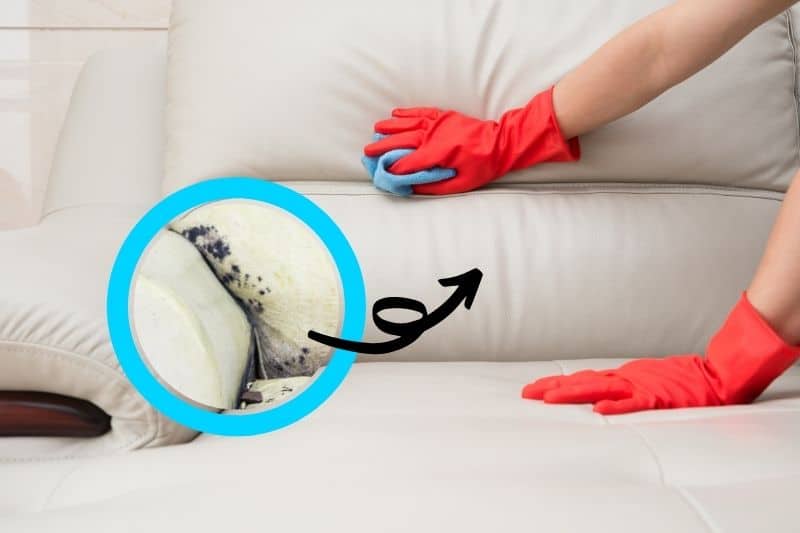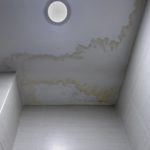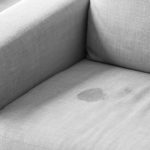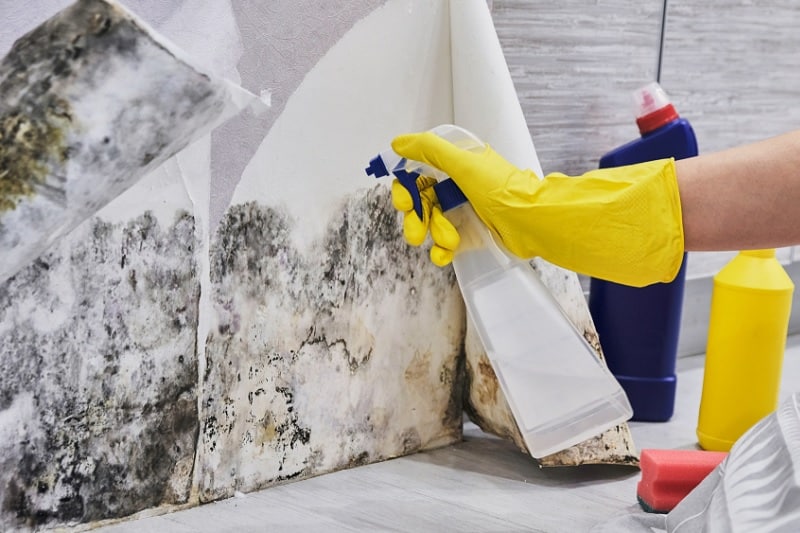Mould loves moist conditions, and this nasty, musty-smelling growth can be found on just about anything including clothing, carpets, and upholstered furniture. Left unchecked, mould and mildew can not only cause staining but smell awful too.
Fortunately, if your fabrics have been stained with mould, there are ways that this can be dealt with quickly and easily.
IMPORTANT TIP: Wear a face mask when cleaning mould to avoid breathing in spores which can cause respiratory irritation.
Before You Start
The type of fabric will decide the best way to tackle a mould problem. Before starting to clean any fabric using a commercial or gentler homemade cleaner, you should always check the manufacturer’s label to make sure that what you are planning will not damage the material.
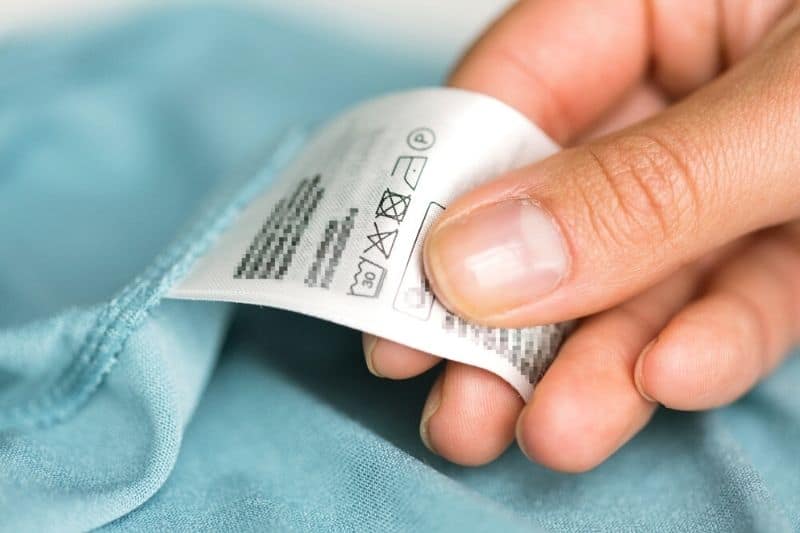
Once you have determined that a cleaning method will not cause damage, make sure to do a patch test. Apply the product to a small, out-of-sight area of the material, to make sure that it doesn’t damage or discolour the fabric before going ahead with the full clean.
When cleaning mould, you should always take care to protect yourself. Wear gloves to protect your hands from the cleaning chemicals and the mould, and in serious cases, consider wearing a face mask to avoid breathing in the spores.
Bleach
Bleach is an effective way to easily clean mould or mildew from some fabrics, however, it’s not recommended for every application.
A little bleach and water is an easy way to remove mould from white fabrics and blinds, but, especially when working with bleach, it is crucial that you perform a patch test first to make sure the fabric will not discolour.
To clean mould with bleach, first, use a vacuum cleaner or brush to remove loose fungi from the fabric. If you are using a brush, try to do this outside so the spores don’t just fall into your carpet.
Mix approximately one cup of bleach with one gallon of water. Dip a brush in the solution, and scrub at the mould. Allow the bleach to sit for around 15 to 20 minutes, before rinsing the material well and drying thoroughly to stop the mould immediately regrowing.
Not Suitable for Bleaching?
Here are some cleaning techniques for removing mould and mildew without bleach.
Clothing
How clothing is treated will depend entirely on the type of fabric, and the colour. Bleaching agents might be suitable for some white fabrics, but they should be avoided on coloured clothing.
Vinegar and bicarbonate of soda (baking soda) can be an ideal alternative to bleach. To remove mould from clothing with this method, first brush any loose fungi from the fabric (ideally outside!). Soak the article of clothing in a vinegar solution that is one-part white vinegar, to four-parts water, for around fifteen to thirty minutes.
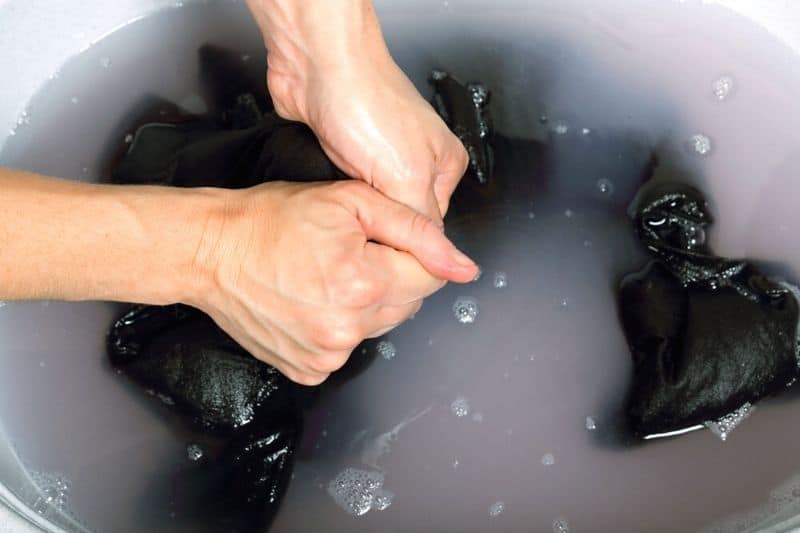
Put the clothing in the washing machine and add a cup of bicarbonate of soda in addition to your regular detergent. Use the longest cycle you can and allow the material to fully air dry once the cycle has finished. For stubborn mould stains, you might find that you need to repeat the process to get the best results.
Upholstery
In the right conditions, mould has an annoying habit of appearing on fabrics that can’t be easily machine washed. If the mould has grown on cushions, curtains, or other upholstery, it can be easily cleaned with a borax solution.
First, use a vacuum cleaner to clear up any loose fungi. Prepare a borax solution by mixing half a cup of borax with two cups of hot water. Dip a cloth into the mix and wring it out well. Rub the mould stains with the solution and allow it to soak in until the mould disappears. Rinse the fabric well with water and leave to dry thoroughly. This trick would work on a plastic shower curtain too!
If you are going to be cleaning with borax, make sure to keep it out of the reach of small children, and always wear gloves when using this chemical as prolonged exposure can irritate the skin.
Blinds
Windows can easily create the perfect breeding ground for mould. If mould has grown on your fabric blinds, the first thing that you could try is laying them out in the sun. The sun has a natural bleaching effect and can also kill some moulds.
If laying the blinds in the sun isn’t enough, you can also clean the fabric with vinegar or borax mixtures, like the ones we mentioned previously for clothing or upholstery.
An alternative method that you could try is a citric acid scrub. To make this scrub, you simply need lemon juice and salt.
After taking down the blinds, use a vacuum cleaner or brush to remove any loose fungi and other debris. Mix a cup of salt with just enough lemon juice to bring it together into a spreadable paste. Use a dry, clean cloth to rub the citric acid scrub into the fabric, before rinsing thoroughly and allowing to dry fully in the sun.
Carpets
If your carpet has started to show signs of mould or mildew, it is important that this is dealt with as quickly as possible. In serious cases, if there is a lot of moisture trapped underneath the carpet, this could end up damaging the floorboards underneath. In these cases, you should always consult a professional to determine the best course of action.
If the mould has only affected a small area and doesn’t appear to have spread to the walls or floorboards, this is something that you can try to clean yourself.
If the mould is in a removable rug, you can hang this outside in the sun to kill the spores. If the sunlight alone isn’t enough to remove the mould, you can move on to the following cleaning method.
If the carpet is fitted, you can attempt the clean using bicarbonate of soda and vinegar. First, ventilate the area by opening windows and doors, and make sure that you are wearing a dust mask and gloves. Use a stiff brush or vacuum cleaner to remove as much of the visible mould as you can. Discard the spores in an outside bin as soon as you have completed this step to stop them from spreading to the rest of your home.
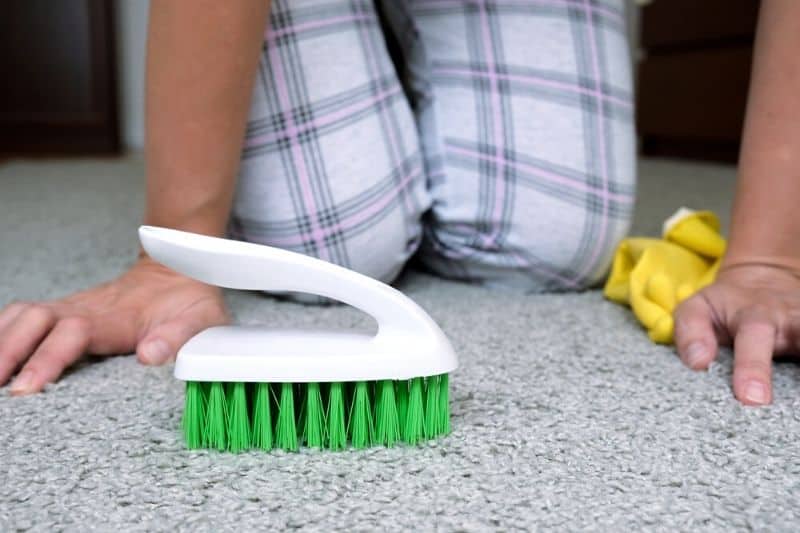
Remove the moisture using bicarbonate of soda. It will absorb the moisture and can help tackle the musty odour too. Sprinkle bicarbonate of soda on the area, leave overnight and then vacuum the area thoroughly.
Scrub the area with white vinegar. White vinegar is effective at tackling stains and is much gentler than traditional chlorine bleaches. Dry the carpet thoroughly to prevent the mould from growing back.
After Treating
Once you’ve treated your fabrics for mould, it is crucial that you let the fabrics dry properly, ideally in the sun. Rinse the fabrics thoroughly to remove any traces of the cleaning agents, and then leave to dry fully to prevent the mould from just growing back in the moist environment.
For materials that can not be dried in the sun, you can soak up any residual moisture using folded towels. As an example, if you have treated the carpet, place a fresh towel over the wet area and stand on it. As the moisture is absorbed, move to a fresh area of the towel. Of course, make sure to wash the towel thoroughly afterwards!
Check out our video on YouTube:

Lover of coffee, painting, and all things cute and fluffy. I’m always on the lookout for easier, more gentle ways to tackle awful household chores.
